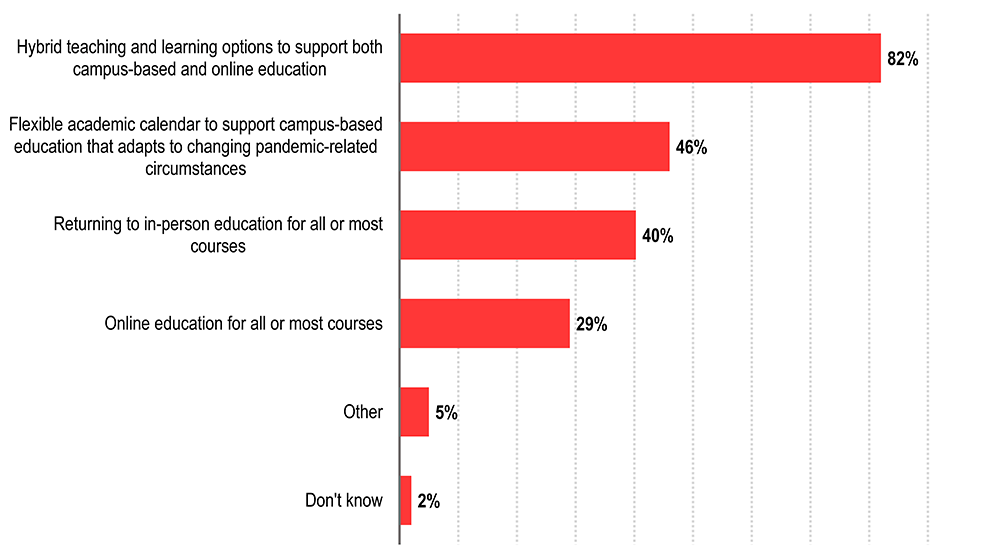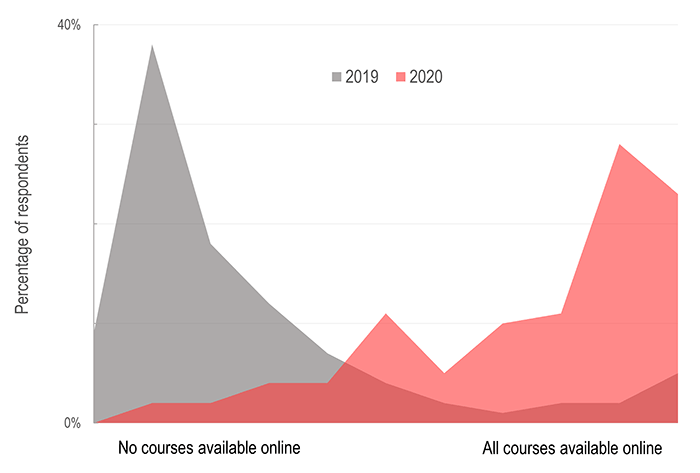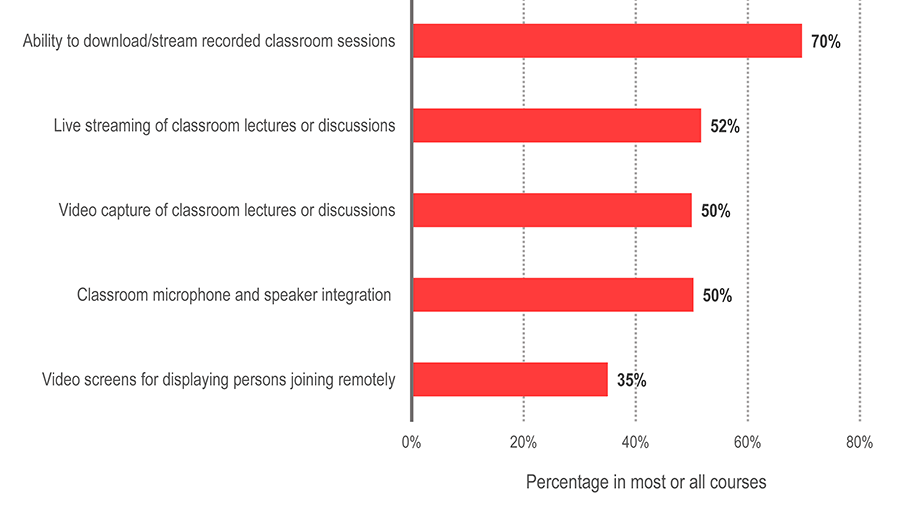Evidence of a New Normal: Surveys on Online Services and Courses
During the early months of the pandemic, institutions' and technology leaders' challenges and needs for information were continuously shifting. EDUCAUSE discerned a need for new modes of data collection and reporting that could keep up with these rapid shifts in needs, and so in April 2020 we launched our new QuickPoll program of research that prioritized short surveys, accelerated data collection and analyses, and concise, visual summaries of our findings. We've deployed this new agile methodology to help inform technology decision makers on a range of topics including student success, proctoring, IT budgets, and the technology workforce. More recently our focus for these efforts has shifted to fall planning as institutions prepare for the 2020–21 academic year.
For this study, EDUCAUSE and Cisco partnered on designing and deploying two QuickPoll surveys to the EDUCAUSE membership community. The first QuickPoll survey, disseminated in June, focused on technology leaders' early plans for course delivery in the fall, as well as on the priorities and solutions they were exploring to support campus health and safety. In August, we disseminated a second QuickPoll survey focused on institutions' plans for online course and service delivery and the adaptation and maintenance of physical campus spaces.
June QuickPoll: Early Technology Practices to Support Campus Health
Institutions have many options, few answers. In our June QuickPoll, respondents indicated a wide variety of options and potential scenarios for the fall. Decision makers across higher ed were considering and planning for a range of possibilities for how the fall term of 2020 would play out, with most respondents focusing their efforts and planning on hybrid models of teaching and learning (82% of respondents; see figure 1).

The future is unclear and uncertain. In open responses, the biggest challenges respondents reported were related to the continued lack of clarity about what the fall would bring for their campuses. Respondents reflected on uncertainty and under-communication within their own institution, as well as the lack of guidance from local or state authorities, as some of their biggest unresolved issues. The uncertainty of the future meant that institutions had to expend resources and staff time to prepare for the unpredictability brought on by the constantly shifting situation during a pandemic.
August QuickPoll: Fall Planning for Online and Physical Spaces
Fall 2020 education will be hybrid. When we surveyed EDUCAUSE members again in August, with the fall semester now fast approaching, the 82% of respondents in June who were considering hybrid teaching for the fall had solidified into 76% of respondents planning to offer hybrid courses in the fall. This finding is accompanied by the dramatic shift from very few courses being offered online in 2019 to most courses being offered online in 2020 (see figure 2).

Student safety is at the forefront of institutions' decisions. A host of motivations might be driving institutions' decisions to offer hybrid delivery of courses, but unsurprisingly, chief among those motivations are the health and safety of students, faculty, and staff, with student needs and preferences close behind.
Institutions favor asynchronous solutions for hybrid learning. Institutions are using a variety of multimodal solutions to hybridize their courses and make them available for remote students using a mixture of asynchronous and, perhaps less commonly, synchronous approaches. Seventy percent of respondents indicated that most or all of their courses would offer remote students the ability to download or stream recorded classroom sessions. For roughly half of respondents, most or all of their courses would offer live streaming, video capture, and microphone and speaker integration. Only about a third of respondents reported that most or all of their courses would include video screens to display remote students (see figure 3).

Institutional services shift online, but the work isn't done. Most institutional services and experiences have had to move online during the pandemic. Despite these shifts in delivery methods, many institutional staff know that more effort is needed to provide certain services. Labs sit at the top of that list, with 88% of respondents reporting that more effort is needed to move the lab experience online. Other high-effort services include student food and housing support (80%) and student co-curricular activities (79%). The services most commonly reported as having moved online with no additional effort needed were faculty office hours, IT support, and human resources, but even for these services, more than 40% of respondents reported that work remained to be done at their institution to fully move these services online.